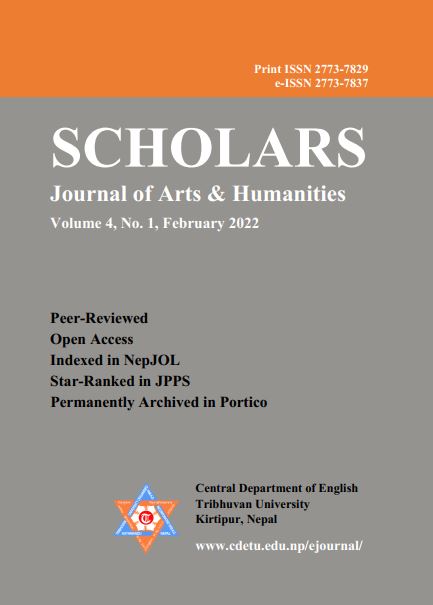The Memory of Performance: From Contents to Contexts of Selected Tharu Folk Dances
DOI:
https://doi.org/10.3126/sjah.v4i1.43050Keywords:
Folk dance, performance, ritual, memory, Kamaiyahood, subjectivityAbstract
The major objective of this paper is to analyze the historical context of the Dangaura Tharu folk dances of Nepal. The study discusses the Tharu subjectivity by assessing the performance as an agency. The primary discussion is based on the issue of Kamaiyahood in the songs narrated during the dance of the community. Dangaura Tharu ethnicity resides across five Tarai districts of Nepal: Dang, Banke, Bardiya, Kailali and Kanchanpur. This study is to identify and evaluate the role of memory in the folk performance of the community. It concludes by justifying the abundance of Kamaiyahood, spatial memory and empathy for nature in the community's folk performance. To collect the data required for the study, this study has adopted the qualitative research method, using the techniques such as direct observation, interview and relevant documents to understand the performing arts and rituals of the Tharus of Nepal. In addition, to analyze the collected data, Richard Schechner's idea of performance as a fortitude for identity has been applied critically. In addition, Alan Dunde's concept of folklore as the identity has also been considered. Thus, the study finds the memory of displacement inherent in the Tharu folk dance. The spatial memory and the Kamaiyahood appear as the dominant motifs in Dangaura Tharu folk performance. Since the dance of the community comprises the songs, reflecting the symbols and their meanings of the dances, for each dance has been critically analyzed in the paper.
Downloads
Downloads
Published
Versions
- 2022-02-18 (2)
- 2022-02-13 (1)
How to Cite
Issue
Section
License
Copyright (c) 2022 Central Department of English, Tribhuvan University and Authors

This work is licensed under a Creative Commons Attribution 4.0 International License.
© Central Department of English, Tribhuvan University and Authors




